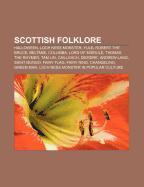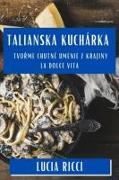- Start
- Scottish folklore
Scottish folklore
Angebote / Angebote:
Source: Wikipedia. Pages: 118. Chapters: Halloween, Loch Ness Monster, Yule, Robert the Bruce, Beltane, Columba, Lord of Misrule, Thomas the Rhymer, Tam Lin, Cailleach, Deirdre, Andrew Lang, Saint Mungo, Fairy Flag, Fairy ring, Changeling, Green Man, Loch Ness Monster in popular culture, Rocking stone, Dunvegan Cup, Sawney Bean, The Gypsy Laddie, List of reported lake monsters, Selkie, Scottish mythology, Scottish pork taboo, Sir Rory Mor's Horn, Robert Roy MacGregor, Monster of Glamis, Yester Castle, Gulf of Corryvreckan, Black Bull of Norroway, Redcap, Brahan Seer, Gold-Tree and Silver-Tree, Finfolk, Fili, Nicnevin, Kate Crackernuts, Bogle, Hebridean mythology and folklore, Lord Reay, Lifting stone, Molly Whuppie, The Battle of the Birds, Kelpie, Queen of Elphame, Teribus ye teri odin, Fear liath, Christie-Cleek, Cutty-sark, Lady of Lawers, Widdershins, Fiery cross, Wallace Sword, Earl Brand, Adder stone, Sunwise, Billy Blind, William II de Soules, Crom Dubh, Merrow, Force-fire, Púca, Wild haggis, North Berwick witch trials, Morag, Wirry-cow, Trow, Shellycoat, Bean nighe, The Red Ettin, Religion of the Yellow Stick, First-Foot, Worm of Linton, Husafell Stone, Jock Tamson's Bairns, MacAlpin's treason, Taghairm, Bodach, Boobrie, Faoilleach, Seonaidh, Rushen Coatie, Nuckelavee, Bauk, Cirein-cròin, MacQueen of Pall à Chrocain, Bannatyne manuscript, The Queen of Elfan's Nourice, Lavellan, F. Marian McNeill, List of Scottish loch-monsters, Fat Lips, Deò-ghrèine, Druineach, Tangie, Muc-sheilch, Unspoken Water, Sluagh, Dòideag, Clay-body, Bard's blessing, Cain bairns, Clann-an-oistir, Fallaid, Fairy riding, Wonder tuft, MacGillonie, Mess John, Lèine bhàn, Slinneanachd, Seileag, Habetrot. Excerpt: The Loch Ness Monster (Scottish Gaelic Niseag) is a cryptid that is reputed to inhabit Loch Ness in the Scottish Highlands. The most frequent speculation is that the creature represents a line of long-surviving plesiosaurs. It is similar to other supposed lake monsters in Scotland and elsewhere, though its description varies from one account to the next. Popular interest and belief in the animal has varied since it was brought to the world's attention in 1933. Evidence of its existence is anecdotal, with minimal and much-disputed photographic material and sonar readings. The scientific community regards the Loch Ness Monster as a modern-day myth, and explains sightings as a mix of hoaxes and wishful thinking. Despite this, it remains one of the most famous examples of cryptozoology. The legendary monster has been affectionately referred to by the nickname Nessie (Scottish Gaelic: ) since the 1950s. Loch NessThe term "monster" was reportedly applied for the first time to the creature on 2 May 1933 by Alex Campbell, the water bailiff for Loch Ness and a part-time journalist, in a report in the Inverness Courier. On 4 August 1933, the Courier published as a full news item the claim of a London man, George Spicer, that a few weeks earlier while motoring around the Loch, he and his wife had seen "the nearest approach to a dragon or pre-historic animal that I have ever seen in my life", trundling across the road toward the Loch carrying "an animal" in its mouth. Other letters began appearing in the Courier, often anonymously, with claims of land or water sightings, either on the writer's part or on the parts of family, acquaintances or stories they remembered being told. These stories soon reached the national (and later the international) press, which des...
Folgt in ca. 5 Arbeitstagen

